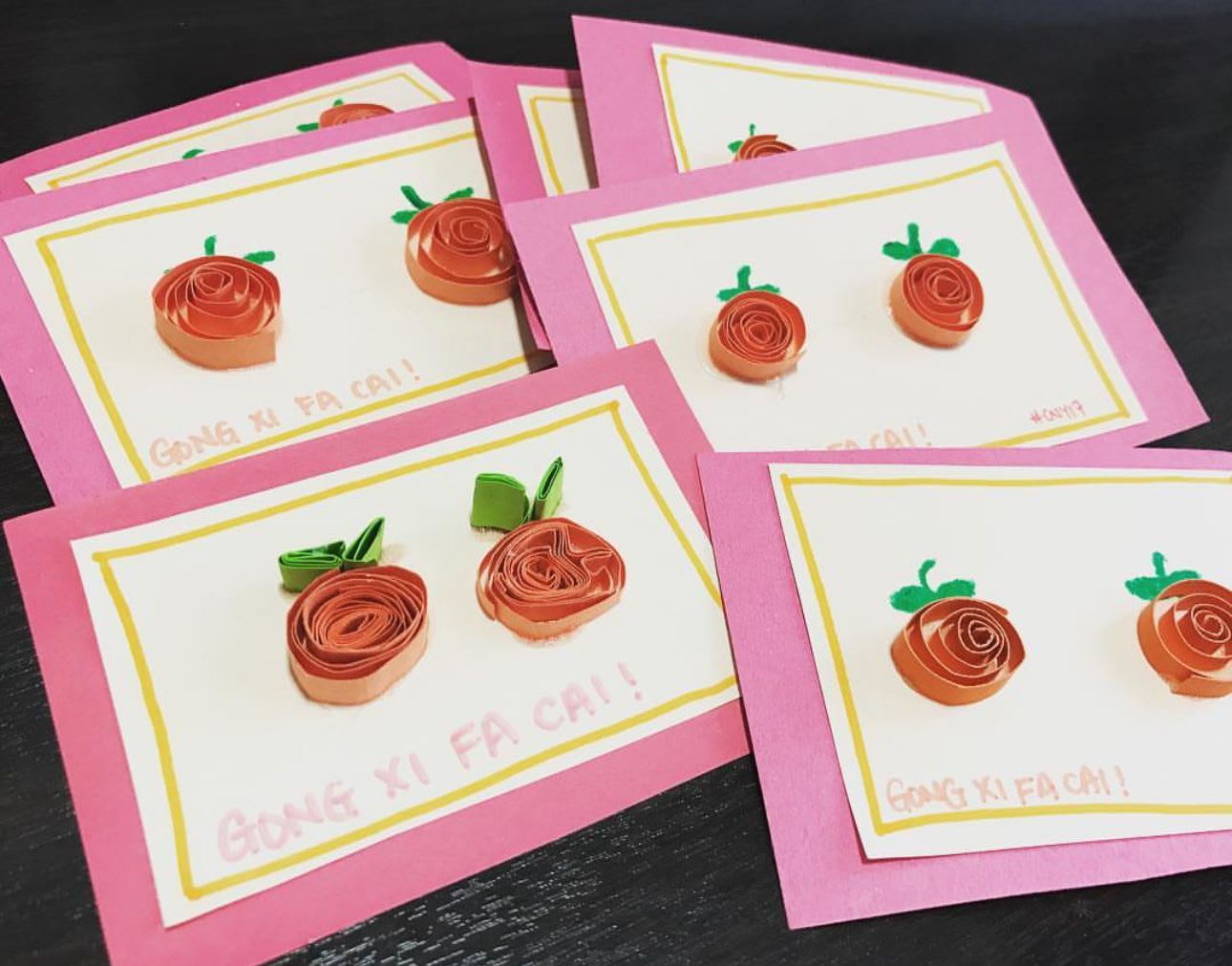150 cards a year: Letter writers, charities lament postage rate hike but have no plans to stop
From a student with pen pals to a property agency with clients who prefer physical greeting cards, Singapore still has fans of snail mail, as CNA finds out.

Non-profit group Hey, You Got Mail! sends out about 400 cards each year. (Photo: Hey, You Got Mail!/Ernest)
SINGAPORE: Snail mail might seem like a thing of the past but for 28-year-old Sean, it’s a hobby he’s had for more than a decade.
The communications executive, who only wanted to be known by his first name, sends at least 150 cards a year, including seasonal cards for Christmas and Chinese New Year as well as special occasions like birthdays and Teachers’ Day.
But he now has to fork out an extra 20 cents to mail out each of his cards.
Postage for standard regular mail increased from 31 cents to 51 cents on Oct 9, after the Singapore Post (SingPost) cited rising costs and declining mail volume.
The last significant increase was in 2014 from 22 cents to 30 cents. On Jan 1 this year, it was raised by 1 cent.
Sean told CNA he was shocked by the latest hike. “I didn’t expect it because normally the price increase comes after a while – not less than a year after that.”
He added that the 20-cent rise was a “huge jump” compared to the 8-cent increase nine years ago.



LETTERS TO PEN PALS
The same can be said for university student Cherlyn Koh, who has been sending letters to her pen pals since 2021.
The 19-year-old, who is in her first year at the National University of Singapore (NUS), told CNA that the price hike was “pretty sudden” and that she was upset when she heard the news.
Ms Koh’s pen pal journey started when she came across Instagram accounts that catered to those looking for other people to correspond with. She currently has pen pals from both Singapore and overseas.
She has sent more than 200 letters over the past two years. The number keeps increasing as she has made more pen pals over the years, said Ms Koh, an English language and linguistics student.

The NUS student also said she wished she could have stocked up on first local stamps, which do not have a postage value indicated and can still be used after the price hike kicks in.
However, the sale of such stamps was suspended after the price increase was announced. Instead, people had to purchase 31-cent stamps, which would be insufficient for postage from Oct 9.
In an FAQ on its website, SingPost said it wanted to "avoid situations where customers buy non-value indicator stamps in bulk to stockpile or profiteer and avoid crowding in our post offices".
The company will also issue a free booklet of 10 first local stamps to each household from end-October.
After realising he could not stock up on first local stamps, communications executive Sean turned to online marketplaces Carousell and Shopee.
He ended up buying more than 20 booklets for about S$4 each. While this meant that he paid 40 cents a stamp – higher than the 31 cents they were worth then – it still meant some cost savings after the price hike, Sean said.

OTHER GROUPS ALSO FEELING THE PINCH
Some charity organisations and real estate agencies also had to adjust their operations after the postage hike.
Hey, You Got Mail! is a ground-up initiative started during the pandemic to alleviate social isolation among the elderly. For S$2, the non-profit group will send a greeting card to your loved ones and, at the same time, send another card to a senior in a nursing home or ageing centre to cheer them up.
But with the postage increase and the rising cost of printing cards, the team plans to increase their fee to S$3 per card, said president Robin Bae.
“With the added mailing cost, we believe a proportional price increase might be necessary to ensure our cards remain affordable, especially for our dedicated youth supporters,” Mr Bae said.
The organisation mails out about 400 cards each year including those to seniors.
“Despite the postage hike, we remain committed to our physical card outreach. However, as we navigate the post-COVID-19 new normal, we are also exploring other engagement models with socially isolated seniors,” said Mr Bae, adding that they are reaching out to the elderly at their homes or community events.

Real estate agency OrangeTee & Tie said it tries to adopt sustainable practices by sending e-greeting cards to clients.
“However, for clients who may not be as comfortable on their smartphones, we continue to send our thoughts to them via physical greeting cards,” said senior associate group director Dorris Tan.
Ms Tan said her company reimburses her for the S$2,000 she spends a month on greeting cards for clients and to mail them out. The postage increase means this cost will rise by about S$1,300 monthly, she added.
“Despite the higher costs, I am unlikely to stop sending physical cards and letters completely since some of our clients still prefer to receive them and I respect these needs and preferences."
JOY FOR LESS THAN A DOLLAR
Postage hike or not, NUS student Ms Koh has no plans to stop sending letters to her pen pals.
“(With) most of the people I send letters to, sending and writing letters are my only means of keeping in contact with them. If we were to simply chat online, it would defeat the purpose of writing physical letters,” she said, adding that she enjoys writing in general and keeping the letters she receives.
Likewise, communications executive Sean pointed out that a physical card or letter has "warmth" compared with a "cold e-card".
Despite the price increase, it still costs less than S$1 to mail out each letter, he added. “If you think about it, less than a dollar and you can bring joy to people.”
Even his friends’ family members have come to know him because of the cards he sends, even though they have not met before. “One parent even said she knows me as the letter writer,” he said.
”(That’s) the power of sending mail, because it reaches the household mailbox and parents of friends who open mailboxes ... compared to sending texts which have less exposure.”


















